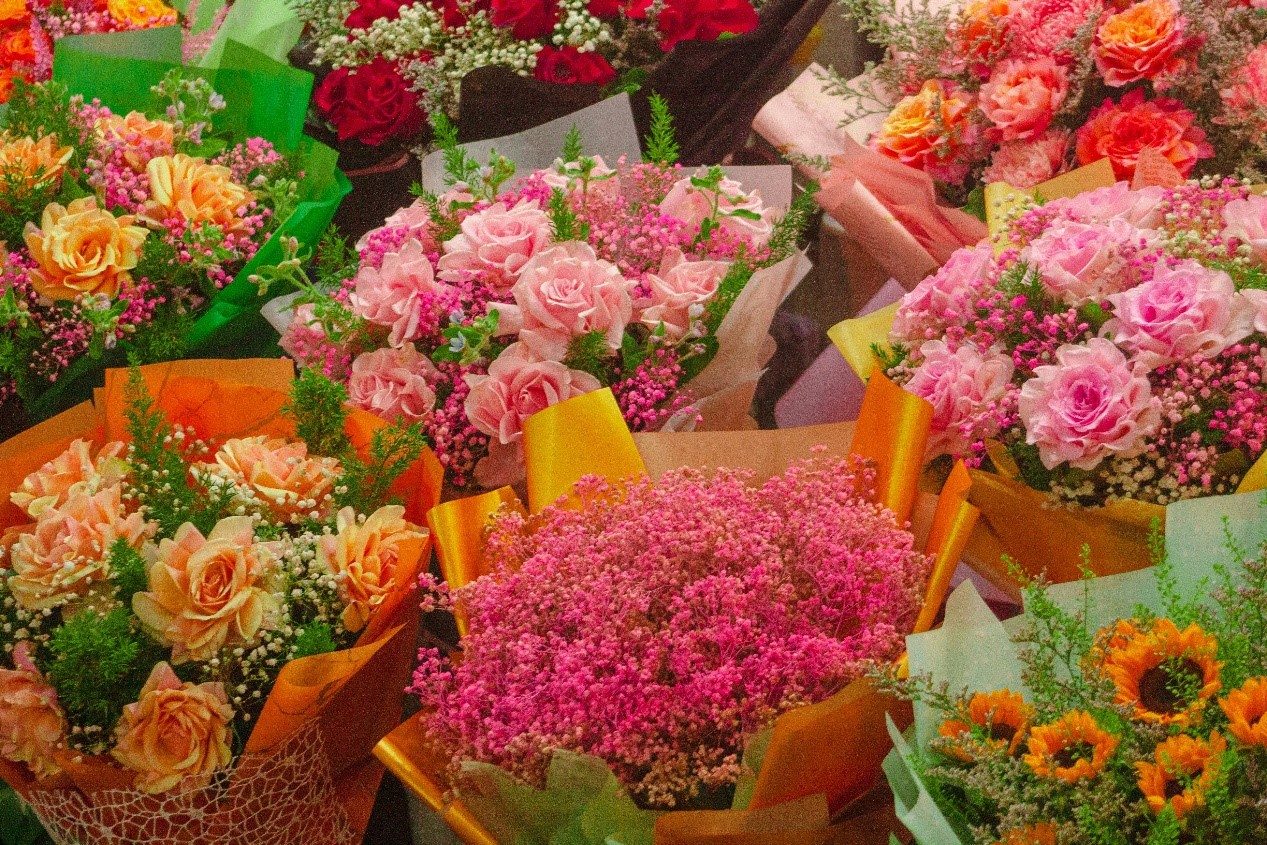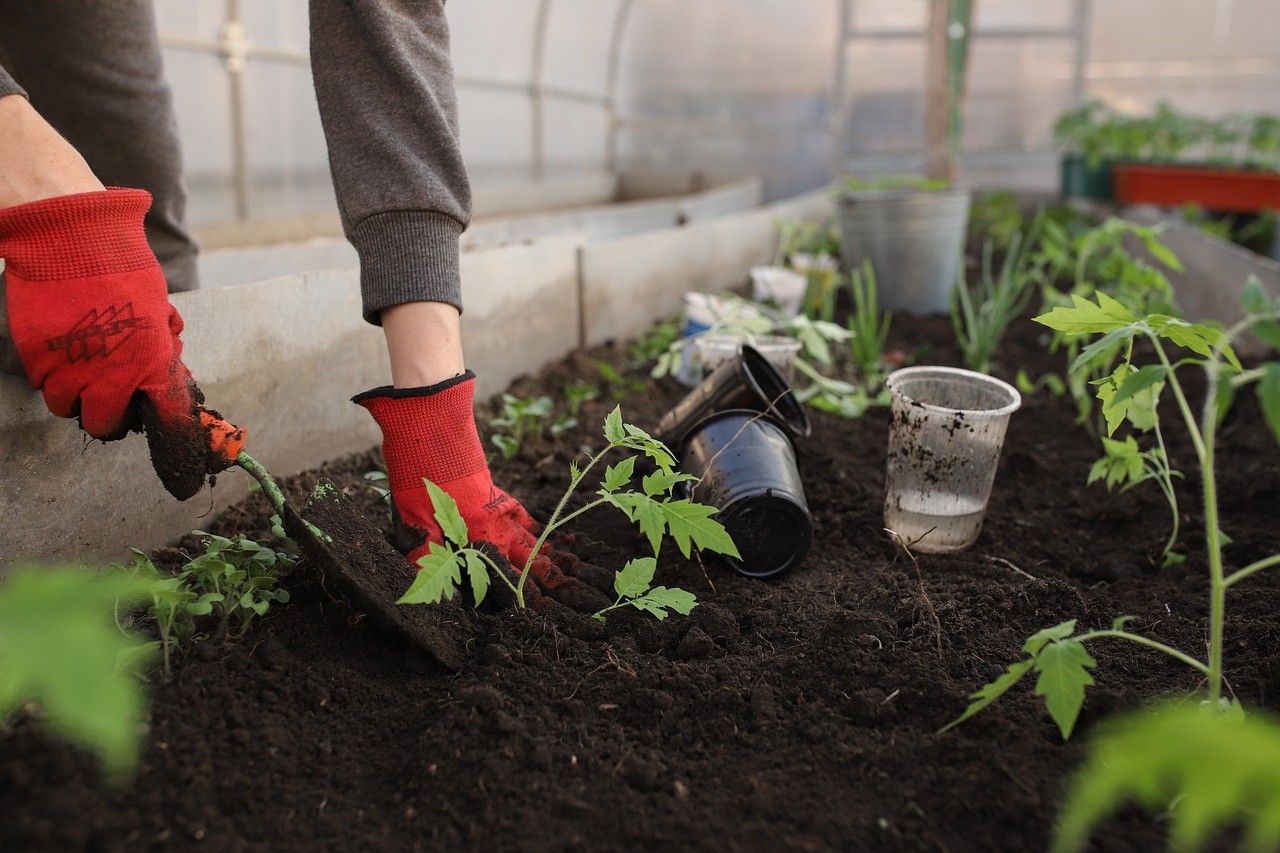Flowers are prevalent in human culture, appearing in weddings, funerals, celebrations, gift-giving, and expressions of emotion. However, in the wave of globalization, a flower may have to travel across oceans to reach its recipient's hands. How much carbon emission does this entail? The flowers in European florists are very likely to have come from distant Kenya. Image Source: Doan Tran Minh Thanh/ Unsplash
The flowers in European florists are very likely to have come from distant Kenya. Image Source: Doan Tran Minh Thanh/ Unsplash
Year-round blossoms: the high-carbon emissions of globalized flowers
Floriculture is a significant global economic industry, with trade reaching €15 billion in 2015. Considering the fragility of fresh flowers, the entire supply chain—from farmers, workers, wholesalers, and transporters to traders, florists, and consumers—requires a comprehensive cold chain to keep the flowers in a "dormant" state. Delivery must be completed within 24 to 48 hours, as each day of delay results in a 15% decrease in flower prices. This necessitates the use of the fastest air transport, which consequently results in smaller shipment volumes and higher carbon emissions.
The largest buyers of flowers globally are located in the European Union and the United States, while the largest flower-producing regions are Ecuador, Colombia, Kenya, and Ethiopia, where popular flower varieties such as roses, carnations, and chrysanthemums are extensively cultivated. Kenya supplies nearly one-third of the entirety of the European Union's roses. The airport in the capital, Nairobi, even has an entire terminal dedicated to transporting flowers. Cut flowers (valuable parts such as stems, leaves, and blossoms directly cut from live flowers) contribute approximately 1% to the national GDP annually, second only to the largest crop, tea.
Sylvie Mamias, Secretary General of the International Flower Trade Association (Union Fleurs, UF), noted that the relocation of flower cultivation from countries in Europe and America began around the 1970s. This was primarily due to the oil crisis, which led to increased fuel prices for maintaining greenhouse temperatures. In contrast, flower-producing regions in South America and Africa have many favorable conditions, such as high latitude and cool nights, which are suitable for the growth of many flowers. Regions near the equator benefit from longer daylight hours and relatively inexpensive labor. The specialization of flower production areas has made seasonal production a thing of the past. Nowadays, a wide variety of flowers can be purchased 365 days a year, but all of this comes at a cost.
 The flowers produced in greenhouses consume a large amount of energy. Image Source: driesel/Pixabay
The flowers produced in greenhouses consume a large amount of energy. Image Source: driesel/Pixabay
Greenhouse flowers high energy requirements produce more carbon emissions than imported flowers
The Sustainable Floristry Network (SFN) in Australia has identified several stages in the lifecycle of commercial flowers where carbon emissions can be calculated. These stages include greenhouse materials and construction, the manufacturing and transportation of fertilizers and pesticides, fuel for planting and harvesting machinery and other transportation vehicles, energy required for producing seedlings and bulbs, and energy used for waste management and processing. Additionally, the final packaging stage may also contribute to carbon emissions.
Throughout the entire process, transportation of flowers undoubtedly has the highest carbon emissions. However, Dr. David Bek, a professor leading Coventry University's Creative Economies and Ecological Sustainability theme at the Research Centre for Creative Economiesat Coventry University has conducted long-term research on sustainable flowers. He points out that greenhouses, which require year-round temperature control, automatic watering, and consume large amounts of fertilizers and pesticides, also contribute significantly.
Seventy percent of Europe's flowers actually come from the Netherlands. Although many of these are imported from countries like Kenya and then re-exported by the Netherlands as a transit country, a significant number of flowers are still produced domestically in the Netherlands. Most Dutch flowers are grown in greenhouses, which consume considerable amounts of water and have substantial carbon emissions.
A 2017 study from the United Kingdom showed that a single lily produced in the Netherlands produces as much as 3.48 kilograms of carbon emissions. In situations where long-distance transportation is not required, the carbon emissions of greenhouse-grown Dutch roses and outdoor-grown Kenyan roses are similar, both around 2.4 kilograms. Even when air transport is considered, Kenyan roses can produce up to 5.5 times less carbon, indicating the significant energy consumption of greenhouses.
 Choosing flowers from small-scale local farmers can also reduce carbon emissions. Image Source: Katya_Ershova/Pixabay
Choosing flowers from small-scale local farmers can also reduce carbon emissions. Image Source: Katya_Ershova/Pixabay
Switching to renewable energy and buying local flowers: businesses and consumers join hands to reduce carbon emissions
For this reason, when attempting to reduce the carbon emissions from flower cultivation, most businesses start by improving the energy supply to greenhouses. For example, PortaNova, a rose grower with greenhouses near the largest flower auction market in Aalsmeer, Netherlands, has successfully reduced the carbon emissions per rose by 90% to just 56 grams per rose by using 100% wind power, switching to LED lighting systems, and implementing a closed-loop fertilization system.
To reduce carbon emissions from transportation, a common approach is to purchase locally produced flowers. The UK organization Flowers from the Farm and the US organization Slow Flower Movement both advocate for buying locally produced flowers whenever possible. They provide consumers with transparent and clear options, allowing businesses to be recognized for their efforts to reduce the use of pesticides and other chemicals while also earning a fair income.
The Slow Flower Movement further introduced the "Slow Flower Manifesto," emphasizing that producing and consuming perishable goods that require significant resources (such as fuel, packaging materials, and water) is irresponsible, especially when domestic alternatives are available. It hopes that flower consumers can reconnect with those in the floral industry to achieve the goals of valuing local production and purchasing seasonal and sustainable flowers.
Additionally, businesses collaborating with Flowers from the Farm have indicated that consumers can further choose locally grown wildflowers that are cultivated without the use of pesticides and fertilizers, effectively ensuring the thriving development of insects and ecosystems in the production areas.

















